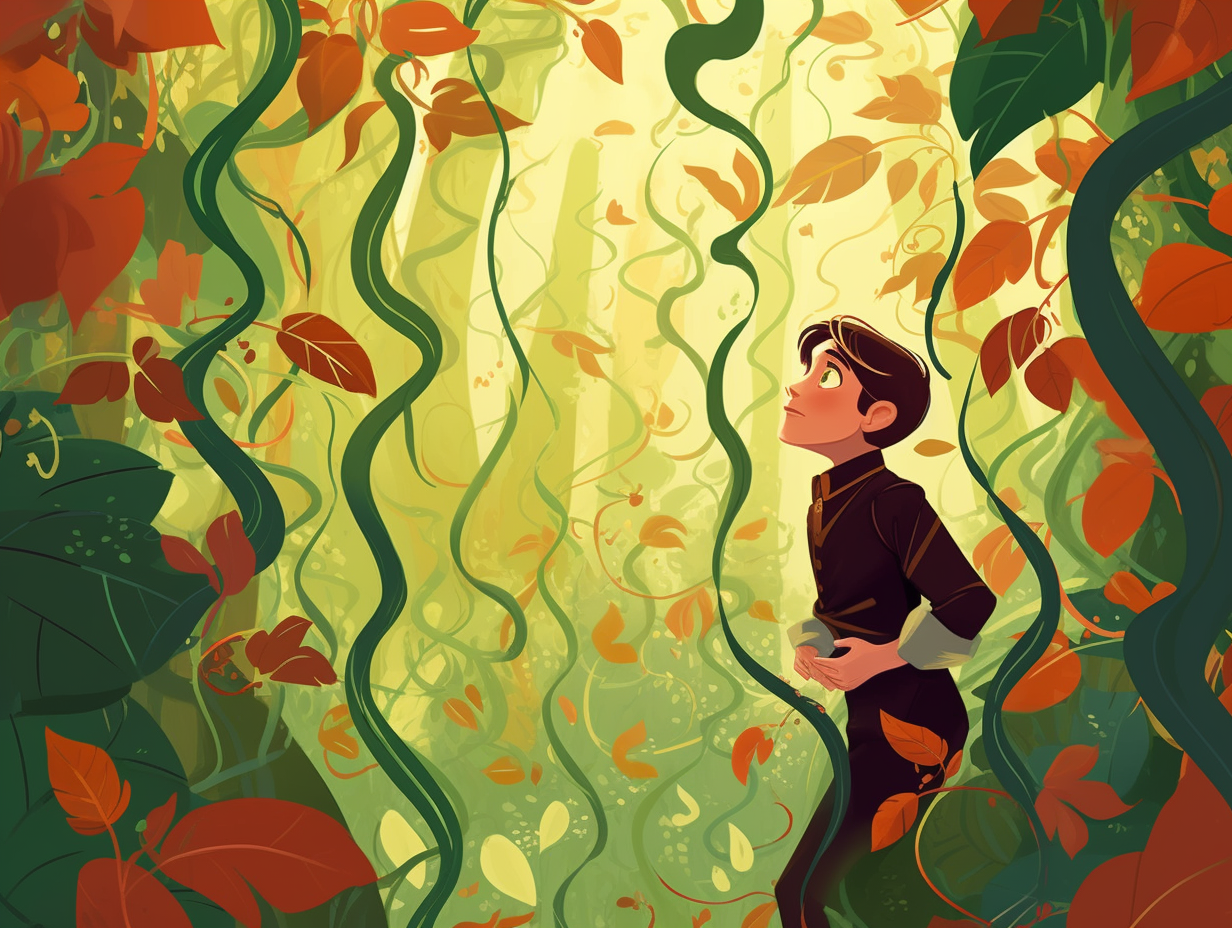Discover the Unexpected: Top 8 Fascinating Fun Facts About Vines You Didn't Know!

1. Kudzu: Nature's Speedster
Step aside, Usain Bolt and Harry Potter's broomsticks – nature has a speedster of its own: The Kudzu vine can grow an astonishing one foot per day, rapidly outnumbering native plants and giving them quite a run for their nutrients in the southeastern United States.
Source => nature.org
2. Creeping Fig: Domesticated Daredevil
When life gives you lemons, grow creeping figs on walls: this enthusiastic climber uses its aerial roots to latch onto and ascend any surface it encounters, whether it be your house, your neighbor's fence, or even the Great Wall of China! But never fear, mortal gardener, for with a sprinkle of trimming and a dash of container gardening, you can domesticate the wild ways of creeping fig and avoid structural destruction, all while reveling in the glory of its vertical escapades.
Source => gardeningknowhow.com

Did you know that over 97% of Turkish Facebook users browse in their native language? Discover more fun facts about global social media usage! 🌍📱
=> Fun Facts about Social-Media
3. Tarzan's Vine vs. Liana Confusion
Swinging into the truth like Tarzan in the jungle, let's untangle this common misconception: Tarzan was actually using vines, not lianas, for his aerial acrobatics, since vines are climbing plants without woody stems, while lianas use trees for crucial support in tropical ecosystems.
Source => tambopatalodge.com
4. Kudzu: The Blob of Botany
Step aside, Jack's beanstalk – there's a new rapid riser in town: Enter Kudzu, the vine that's binged its way through the South, gobbling up acres and flirting with native plants (often to their extinction!). Behaving like a botanical version of The Blob, this seemingly innocent 1876 ornamental import can belch out a startling foot of growth per day, playing a relentless game of leapfrog with local ecosystems and turning biodiversity into a fine art of mono-muted green.
Source => nature.org

5. Passion Flower: Spider-Man's Botanic Cousin
When passion flower vines aren't auditioning for the next Spider-Man movie, they actually prefer to grapple with walls like Peter Parker's lesser-known cousin: These ambitious climbers use specialized tendrils that latch onto the tiniest crevices of flat surfaces like rock walls, and then secrete a waxy substance to fill any remaining gaps, ensuring a grip that would make Spidey proud.
Source => asknature.org
6. Lianas: Tropical Rainforest Ninjas
Imagine Tarzan swinging from a thick liana, his hair blowing in the wind, loincloth flying: he's not just having fun but also indirectly helping 2,500 species from 90 plant families that make up the woody vines in tropical rainforests! These vines can range from tiny wallflowers to massive tree-like giants, stretching over 3,000 feet in length. Using techniques straight out of a ninja's playbook, like stem twining, clasping tendrils, and adhesive roots, vines and lianas work their way upward, eventually dominating 40 percent of the canopy leaves.
Source => rainforests.mongabay.com
7. Grape Vines: Royalty for 7,000 Years
Forget hitching a DeLorean to find a vine phenomenon: grapes have been the reigning vine royalty for over 7,000 years! They've gone from ancient bunches to modern-day table grapes, raisins, jams, jellies, juices, and the most dapper of drinks—wine. Today's grape escapades have the United States cultivating more than 6 million tons of this juicy delight annually, particularly in California and Washington, with a vine variety that caters to diverse tastes and purposes.
Source => agmrc.org
8. Kudzu: Livestock's Green Buffet
While Jack's beanstalk might have caused some trouble, the kudzu vine is out here keeping farm animals fed and happy: this persistent weed actually produces delicious, high-quality forage, with 15 to 18 percent crude protein content and over 60 percent in total digestible nutrients, that is perfect for livestock and poultry to munch on all day long.
Source => aces.edu
Related Fun Facts




















